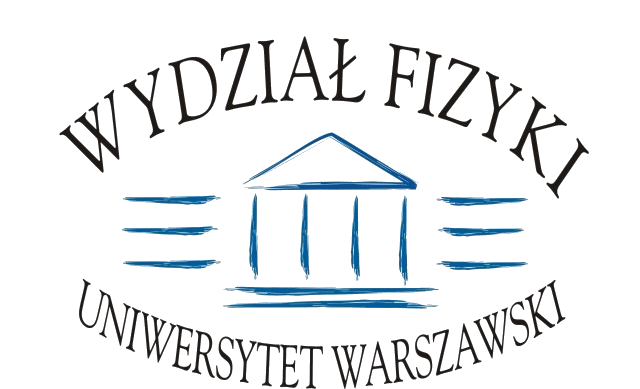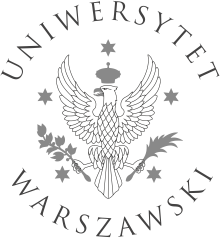Seminarium Kosmologia i Fizyka Cząstek
2006/2007 | 2007/2008 | 2008/2009 | 2009/2010 | 2010/2011 | 2011/2012 | 2012/2013 | 2013/2014 | 2014/2015 | 2015/2016 | 2016/2017
2017-06-13 (Wtorek)
Michał Wieczorek (IFT UW)
On reheating in alpha attractor models of inflation
With increasing accuracy of CMB data, a thorough, quantitative understanding of the post-inflationary reheating era becomes more and more important for constraining different models of inflation. In particular, a precise computation of the non-homogeneous field evolution during preheating is desirable.In this talk I will present results of such computation for single field inflation model based on alpha-attractors models of inflation. I will show the Floquet analysis of field perturbations evolution, as well as results of full non-linear simulations of the field evolution. I will discuss the importance of studying the dynamics of both scalar fields present in the model.
2017-06-06 (Wtorek)
(University of Warsaw and Northeastern University, Boston)
String Lessons for Amplitudes
I will explain how superstring techniques allow some insight into the structure of scattering amplitudes and can be used for studying connections between general relativity and gauge theories.
2017-05-30 (Wtorek)
Adam Markiewicz (IFT UW)
Dynamical relaxation in 2HDM
The dynamical relaxation provides an interesting solution to the hierarchy problem in face of the missing signatures of any new physics in recent experiments. Through a dynamical process taking place in the inflationary phase of the universe it manages to achieve a small electroweak scale without introducing new states observable in current experiments, all while maintaining technical naturalness. In this talk I will present some aspects of applying this mechanism (in its double-scanning variant) to models with two Higgs doublets. I will show how a simple approximation can be used to derive an explicit formula for the final, relaxed vevs, and how in general the dynamical relaxation fails to produce small vevs if multiple scalars are relaxed simultaneously. I will also discuss the possible ways out of this problem and the conditions that must be satisfied for relaxation to remain viable.
2017-05-09 (Wtorek)
Aqeel Ahmed (IFT UW)
Multi-component dark matter: vector and fermion case
It is plausible that dark sector of our universe has more than one stable particle which contribute to the observed dark matter relic abundance. I will present a generic multi-component dark matter scenario where two or three dark sector particles are stable due to the presence of discrete symmetries. As a specific two (three) component dark matter scenario, I will consider a model where a vector and Majorana fermion(s) are stable due to a dark charge conjugation symmetry.
2017-04-25 (Wtorek)
Nicolás Bernal (Centro de Investigaciones, Universidad Antonio Nariño, Colombia)
Simply split SIMPs
Dark Matter which interacts strongly with itself, but only feebly with the Standard Model is a possibility that has been entertained to solve apparent small-scale structure problems that are pertinent to the non-interacting cold Dark Matter paradigm. In this talk, we study the simple case in which the self-scattering rate today is regulated by kinematics and/or the abundance ratio, through the mass-splitting of nearly degenerate pseudo-Dirac fermions χ1 and χ2 or real scalars ϕ1 and ϕ2. We calculate the relic density of these states in a scenario where self-scattering proceeds through off-diagonal couplings with a vector particle V (Dark Photon) and where the abundance is set through number-depleting 4-to-2 reactions in the hidden sector, or, alternatively, via freeze-in. We study the implications of the considered models and their prospect of solving astrophysical small-scale structure problems. We also show how the introduction of the(meta-)stable heavier state may be probed in future dark matter searches
2017-04-11 (Wtorek)
Piotr Zalewski (NCBJ)
Search for a dark matter at the LHC
A dark matter is probably the only challenge that has clear experimental (cosmological and astrophysical) motivation, and which the LHC, perhaps, can face. Almost every search at the LHC is somehow related to some dark matter candidate particle. I will try to review the status of dark matter searches at the LHC in the middle of the LHC run 2.
2017-04-04 (Wtorek)
Roberto Vega Morales (Granada University)
LHC Probes of SM-like & Exotic Higgs Bosons
In this talk I give an overview of various probes of a Standard Model like Higgs boson as well as other exotic scalars which might be present in beyond the Standard Model scenarios of electroweak symmetry breaking. I will primarily focus on four lepton probes of the 125 GeV Higgs boson and using the fully differential spectra to decipher its detailed properties. I will also discuss possibilities for probing CP violation in the two lepton plus photon channel. If time permits I will also discuss diboson probes of exotic scalars which can be found in models of electroweak symmetry breaking with extended Higgs sectors.
2017-03-28 (Wtorek)
Łukasz Nakonieczny (IFT UW)
Starobinsky inflation - loop corrections or new physics?
One of the mostly debated topics in modern cosmology is model building for inflation. Recent Planck data seem to favor simple models, amongst them there is the Starobinsky model based on the modification of the gravitational action. Its characteristic feature is the presence of the Ricci scalar squared term. It is often assumed that such a term could be generated by loop corrections of the matter sector. During the presentation I will show by explicit calculations how to obtain such a term in the framework of quantum field theory in curved spacetime. Surprisingly, the obtained results seem to indicate that the attained inflationary action leads to incorrect model of inflation.
2017-03-21 (Wtorek)
Eugeny Babichev (Orsay, LPT)
Black holes and Horndeski theory and beyond
I will review black hole solutions for Horndeski theory and for its extension. For shift symmetric theories of Horndeski and beyond Horndeski theory, black holes involve several classes of nontrivial solutions: those that include, at the level of the action, a linear coupling to the Gauss-Bonnet term and those that involve time dependence in the galileon field. I will describe the black hole solutions of both classes in some detail. I will also review and discuss recent results on hairy black holes in particular subclasses of the theory.
2017-03-14 (Wtorek)
Michał Artymowski (UJ)
Multi-phase inflation
I will present several models of single and multi-field inflation, which happens in few phases. I will show how the multi-phase inflation can help us with naturalness of the Universe. In the single field scenario I will show possible similarities to multi-field inflation. In particular I will focus on characteristic features of this class of models, like inflationary break and massive entropy production during inflation
Stron 1 z 3






